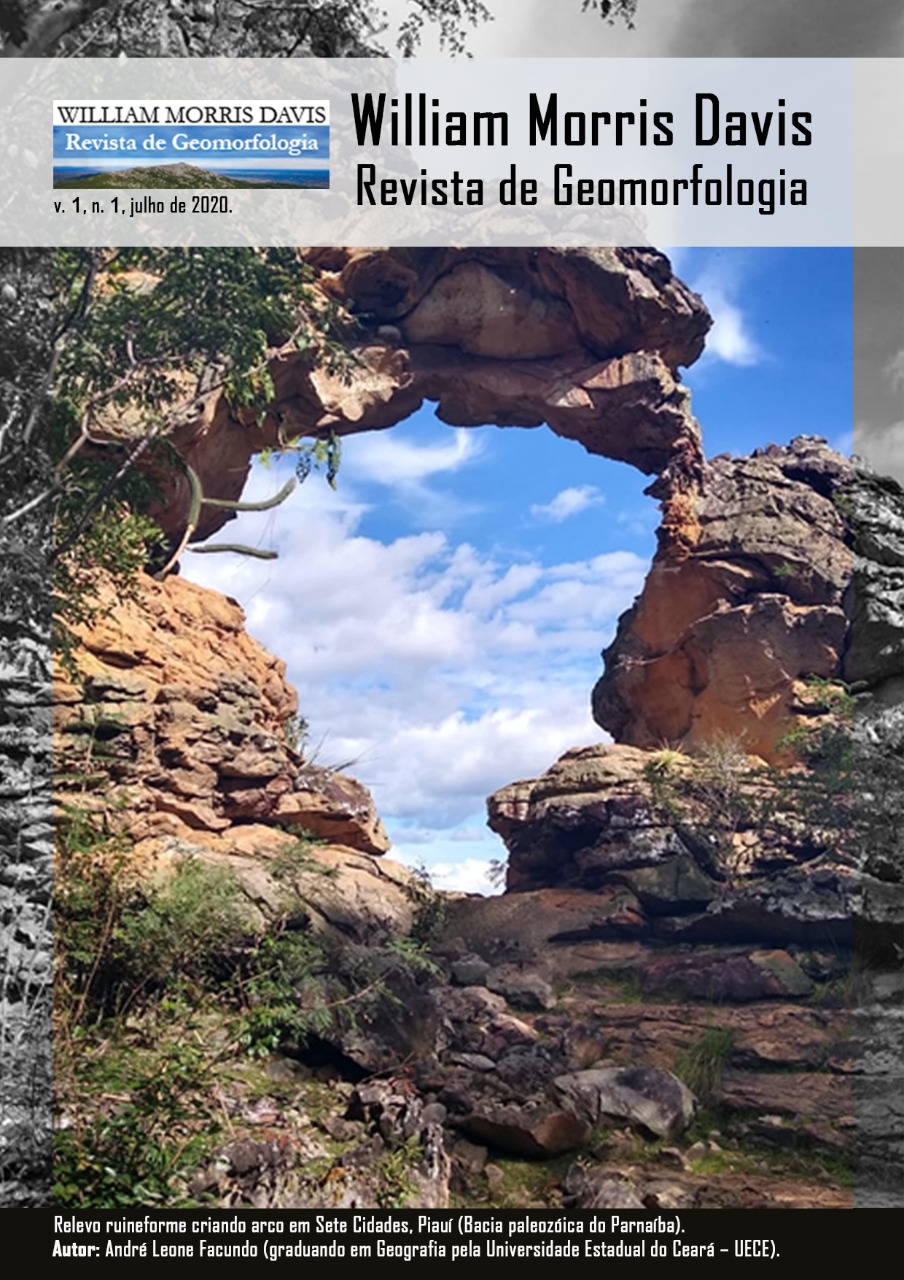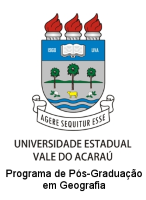GRANITIC LANDSCAPE IN THE MUNRO PLUTON (TAPERA DE BURGOS), PROVINCE OF CHUBUT, PATAGONIA, ARGENTINA
Palavras-chave:
Munro Pluton, Patagonia, Argentina, Granitic landscape, Fractures, WeatheringResumo
The Munro Pluton is located in the extra-Andean region of the province of Chubut, Argentina, in northern Patagonia, northeast of the Sierra de Tecka and northwest of the Sierra de Languineo. It is a sub-volcanic pluton with a SHRIMP age of 60 Ma (Paleocene?). Studies of fission tracks on apatites of the studied region suggest that the exhumation of the region took place during the Paleogene, indicating that the lapse since its emplacement until its exhumation, took less than 35 Ma, and that the pluton has been exposed to weathering at least since the Miocene until present times. This pluton has ellipsoidal shape and a surface of 25 km2 and it is intruded by two dyke systems. The Munro Pluton develops a landscape whose weathering front exposes fresh rocks, regolith zones and boulders immersed in regolith. Granitic landforms have been recognized at different scales. Among the bigger landforms of the granitic landscape, the following have been identified: domes (bornhardts), nubbins, koppies and smaller landforms such as boulders, flared slopes, gnammas, rills/gutters/gullies, tafoni and pseudo-bedding. Structural and textural observations allowed the inference that many of the identified landforms are generated in the sub-soil, being followed by the regolith mobilization thus exposing the paleo-weathering front. Other landforms have a tectonic component associated for their development, such as pseudo-bedding, as well as the endogenous deformations, related to the emplacement type of the Munro pluton. In general, most of the landforms are convergent as they evolve along different pathways.
Downloads
Publicado
Como Citar
Edição
Seção
Licença
This work is licensed under a Creative Commons Attribution 4.0 International License.
Autores que publicam nesta revista concordam com os seguintes termos:
- Autores mantém os direitos autorais e concedem a William Morris Davis o direito de primeira publicação, com o trabalho simultaneamente licenciado sob a Creative Commons Attribution License (CC-BY 4.0), que permite o compartilhamento do trabalho com reconhecimento da autoria do trabalho e publicação inicial nesta revista.
- Autores têm autorização para assumir contratos adicionais separadamente, para distribuição não-exclusiva da versão do trabalho publicada nesta revista (ex.: publicar em repositório institucional ou como capítulo de livro), com reconhecimento de autoria e publicação inicial nesta revista.
- Autores têm permissão e são estimulados a publicar e distribuir seu trabalho online (ex.: em repositórios institucionais ou na sua página pessoal) após o processo editorial, já que isso pode aumentar o impacto e a citação do trabalho publicado (Veja O Efeito do Acesso Livre).
- Autores são responsáveis pelo conteúdo constante no manuscrito publicado na revista.







